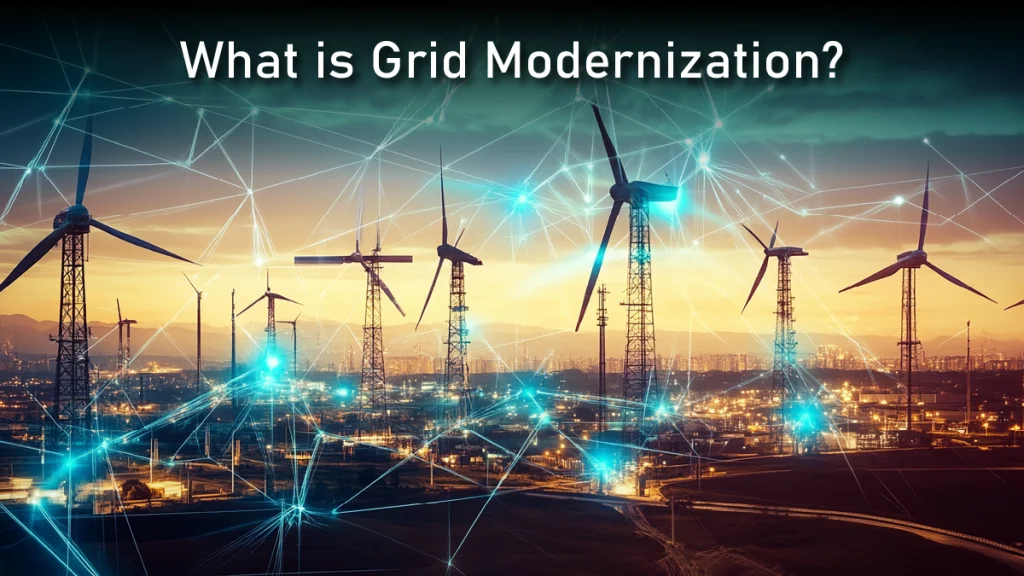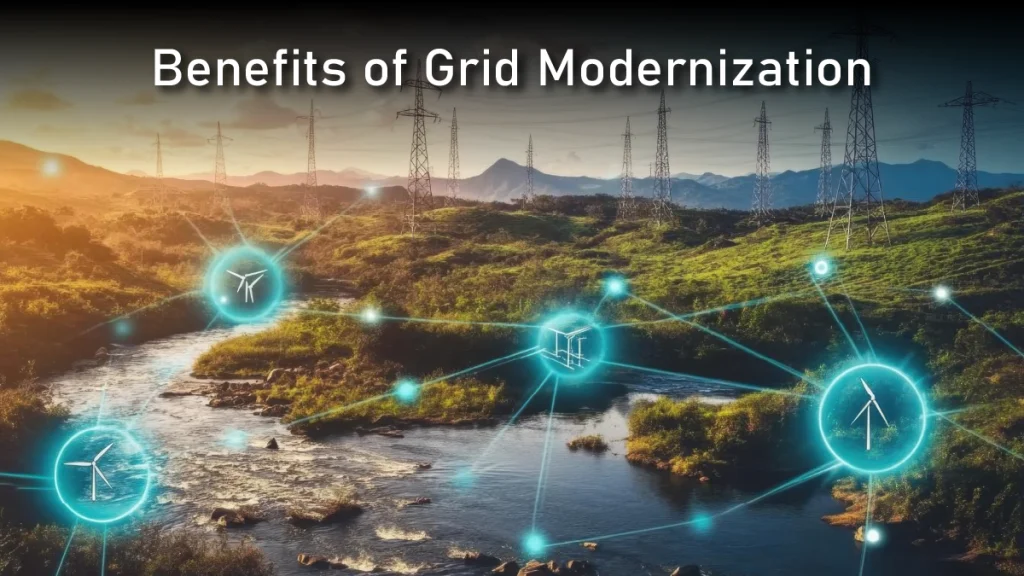If there’s one thing everyone agrees on, it’s that grid modernization is long overdue.
It has always been an ongoing effort to modernize the electric grid. The current grid, however, is clearly inadequate to handle the growing demand for electricity, as seen by recent years. The United States utilized more energy than it has ever done in 2018, according to the U.S. Energy Information Administration, and this trend will continue as the country’s population grows.
According to the National Council of State Legislatures, by 2030, the US will need to spend up to $2 trillion on grid modernization — and that’s just to keep the electric grid reliable. So, what is the concept of a modern grid? Let’s explore.
What is Grid Modernization?

Grid Modernization refers to the process of updating and improving the electric power grid to enhance its efficiency, reliability, flexibility, and resilience. It involves the integration of advanced technologies such as digital communication, automation, smart meters, sensors, and renewable energy sources to make the grid more adaptable to modern energy demands.
A key component of modernizing the grid is the microgrid.
So, the question that arises here is: what is microgrid definition and what are the features of a microgrid?
A microgrid is basically a localized energy system capable of operating independently or in conjunction with the main grid. Microgrids improve grid resilience by allowing communities or specific areas to generate, store, and manage their own power, especially during grid outages. They often incorporate renewable energy sources like solar or wind, along with energy storage solutions, to increase energy efficiency and reliability.
Benefits of Grid Modernization

Without a doubt, the way electricity is used on the power grid now is not the same as how it was used in the past. By updating the grid, we can make sure that it can fully utilize the technology that we use on a daily basis.
Grid modernization is possibly more important now than in the past due to the nation’s aged assets reaching the end of their functional lifespans and the rising demand for energy. There are many advantages to building a 21st-century electric grid. It can assist minimize carbon and other emissions, increase system efficiency, lower costs for businesses and electric users, and enable the integration of renewable energy generation and distribution.
The following are some more advantages of grid modernization:
- Reduced energy expenses
- Increase the sharing of data about energy consumption
- Cut down on power disruptions
- Reduce response times to disruptions
- Enhance cyber security
- Permit various forms of energy
Also Read: 5 Surprising Disadvantages of Floating Solar [+ Cost]
Why is Grid Modernization Important?
There are several key reasons why modernizing the electric grid is essential.
First, the amount of electricity that users use annually keeps increasing. The increased demand is putting a lot of strain on outdated transmission lines, which may eventually lead to their failure.
Second, we must put systems in place to control this erratic power source as the amount of renewable energy produced by sources like solar and wind power grows. After all, grid operators find it challenging to forecast the direction of the wind and the hours of sunlight.
Third, the surge in electric vehicles. Increased demand on the current grid infrastructure results from the growing use of electric vehicles. Around 10% of all vehicles on American roadways are expected to be electric vehicles (EVs), with an expected 26.4 million by 2030, according to projections from the Edison Electric Institute.
Last but not least, the threat posed by grid security is growing. Ensuring energy reliability requires modernizing the electric infrastructure in order to combat external threats.
Grid Modernization Technologies And Solutions
Let’s examine a few of the key innovations and technologies that make modernizing the smart grid possible.
● Smart Electric Grids and IoT Technologies
IoT technology makes it possible for physical objects to establish a network of communication without the need for a central relay. This can assist smart grids in anticipating issues and identifying outages before they occur. Real-time data from sensors and networked devices in the Internet of Things is sent back to a central system. Because IoT technology can establish a large network without a centralized modem, it can be deployed at large scale.
Unquestionably, reports from the Smart Grid Consumer Collaborative and the National Energy Technology Laboratory show that grid modernization produces significant economic, environmental, and energy benefits that significantly outweigh the costs involved.
● Renewable Energy Integration
Installing renewable energy sources, such as solar and wind power, is made simpler by smart grids. Because these energy sources rely on the physical components of nature, they experience a lot of ups and downs. Because of smart grid technology, the grid can remain stable even with these erratic energy sources.
In 2023, almost 41% of the electricity generated in the United States came from clean energy sources. Due to their daily and seasonal variations in availability, wind and solar energy—which together account for more than 16% of the total generation—are referred to as “variable” renewable energy sources.
● Electric Vehicles
By powering their motors with rechargeable batteries, electric vehicles (EVs) contribute to the reduction of emissions, which account for 28% of all greenhouse gas emissions in the United States. Since electric vehicles have a limited range and lack adequate infrastructure for recharge, hybrid vehicles combine traditional engines with electric motors.
Personal-use EVs have advanced significantly as a result of Tesla’s success. There were more than 1.18 million EVs in the United States in 2019. Future growth of this type of vehicle is dependent upon declining costs, longer range, improved availability of charges, favorable laws, and the electrification of public transportation. The increased use of electric vehicles and a cleaner energy system in place of conventional vehicles could result in an 18.2 million metric ton reduction in the annual emissions of carbon dioxide equivalent from global warming by the year 2025.
● Smart Metering And Customer Empowerment
The technology of smart meters gives consumers comprehensive data on their periodic electricity use. Due to the fact that their local energy tariffs determine when high-cost consumption periods occur, this can assist commercial and industrial clients in responding to these usage patterns in order to reduce expenses or avoid them. When compared to typical fully-bundled fixed energy price, customers can utilize this knowledge to enroll in hybrid energy supply products like block and index, which can help them save money.
To Conclude
Grid modernization is essential for creating a smarter, more resilient, and sustainable energy infrastructure. With the integration of advanced technologies, renewable energy sources, and microgrids, modernizing the grid will help meet growing energy demands while reducing environmental impact.
Bottom line—grid modernization isn’t a debate anymore, it’s a must.



